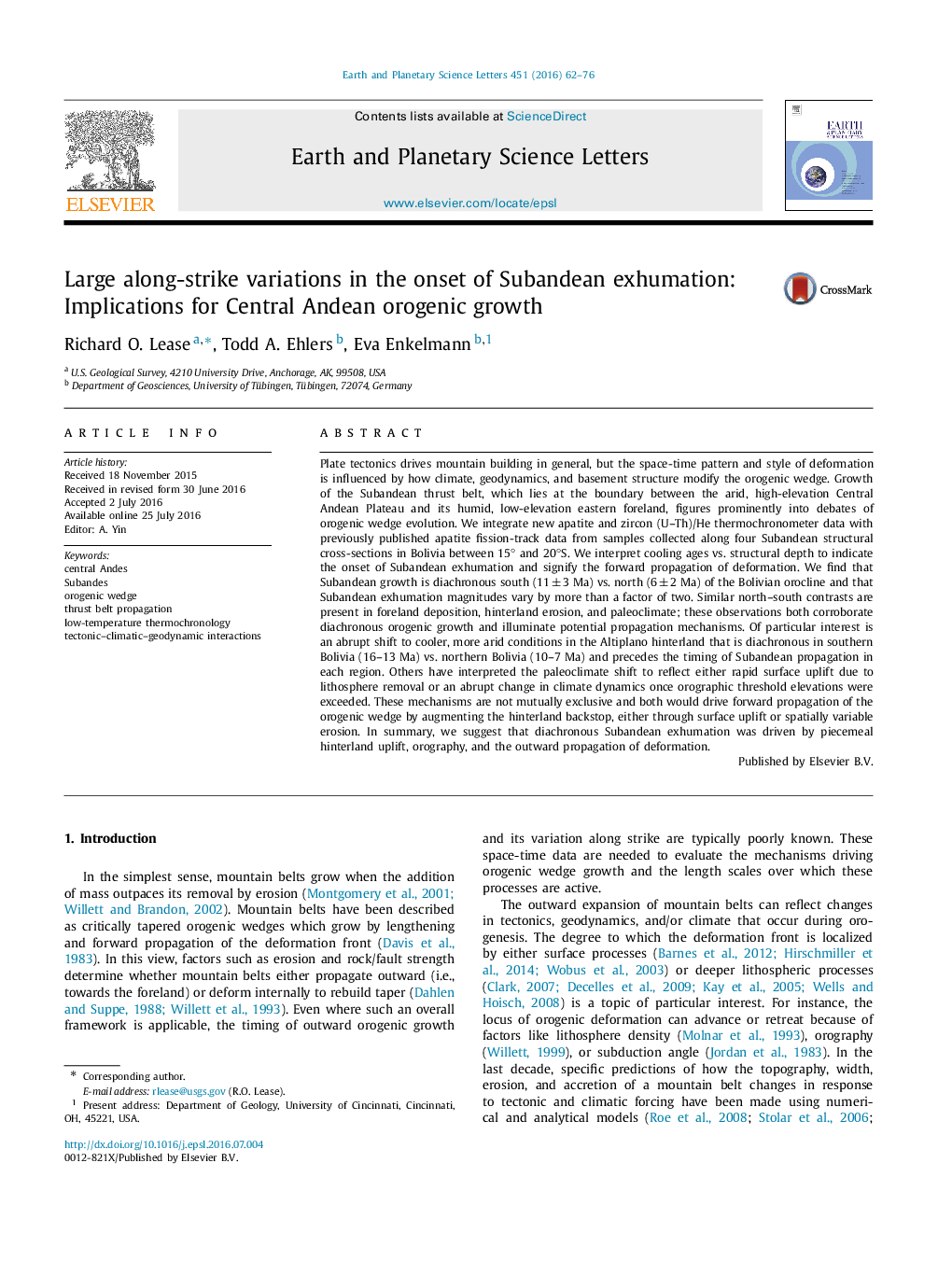| کد مقاله | کد نشریه | سال انتشار | مقاله انگلیسی | نسخه تمام متن |
|---|---|---|---|---|
| 6427248 | 1634705 | 2016 | 15 صفحه PDF | دانلود رایگان |

- Thermochronology tied to cross-sections detects growth of the eastern Central Andes.
- Subandes exhumation magnitudes vary by a factor of two along strike of thrust belt.
- Exhumation onset differs south (11±3Ma) vs. north (6±2Ma) of Bolivian orocline.
- Deformation in each region follows uplift and climate change in adjacent hinterland.
- Orogenic propagation occurs over lengthscales of 200-500 km.
Plate tectonics drives mountain building in general, but the space-time pattern and style of deformation is influenced by how climate, geodynamics, and basement structure modify the orogenic wedge. Growth of the Subandean thrust belt, which lies at the boundary between the arid, high-elevation Central Andean Plateau and its humid, low-elevation eastern foreland, figures prominently into debates of orogenic wedge evolution. We integrate new apatite and zircon (U-Th)/He thermochronometer data with previously published apatite fission-track data from samples collected along four Subandean structural cross-sections in Bolivia between 15° and 20°S. We interpret cooling ages vs. structural depth to indicate the onset of Subandean exhumation and signify the forward propagation of deformation. We find that Subandean growth is diachronous south (11±3Ma) vs. north (6±2Ma) of the Bolivian orocline and that Subandean exhumation magnitudes vary by more than a factor of two. Similar north-south contrasts are present in foreland deposition, hinterland erosion, and paleoclimate; these observations both corroborate diachronous orogenic growth and illuminate potential propagation mechanisms. Of particular interest is an abrupt shift to cooler, more arid conditions in the Altiplano hinterland that is diachronous in southern Bolivia (16-13 Ma) vs. northern Bolivia (10-7 Ma) and precedes the timing of Subandean propagation in each region. Others have interpreted the paleoclimate shift to reflect either rapid surface uplift due to lithosphere removal or an abrupt change in climate dynamics once orographic threshold elevations were exceeded. These mechanisms are not mutually exclusive and both would drive forward propagation of the orogenic wedge by augmenting the hinterland backstop, either through surface uplift or spatially variable erosion. In summary, we suggest that diachronous Subandean exhumation was driven by piecemeal hinterland uplift, orography, and the outward propagation of deformation.
161
Journal: Earth and Planetary Science Letters - Volume 451, 1 October 2016, Pages 62-76